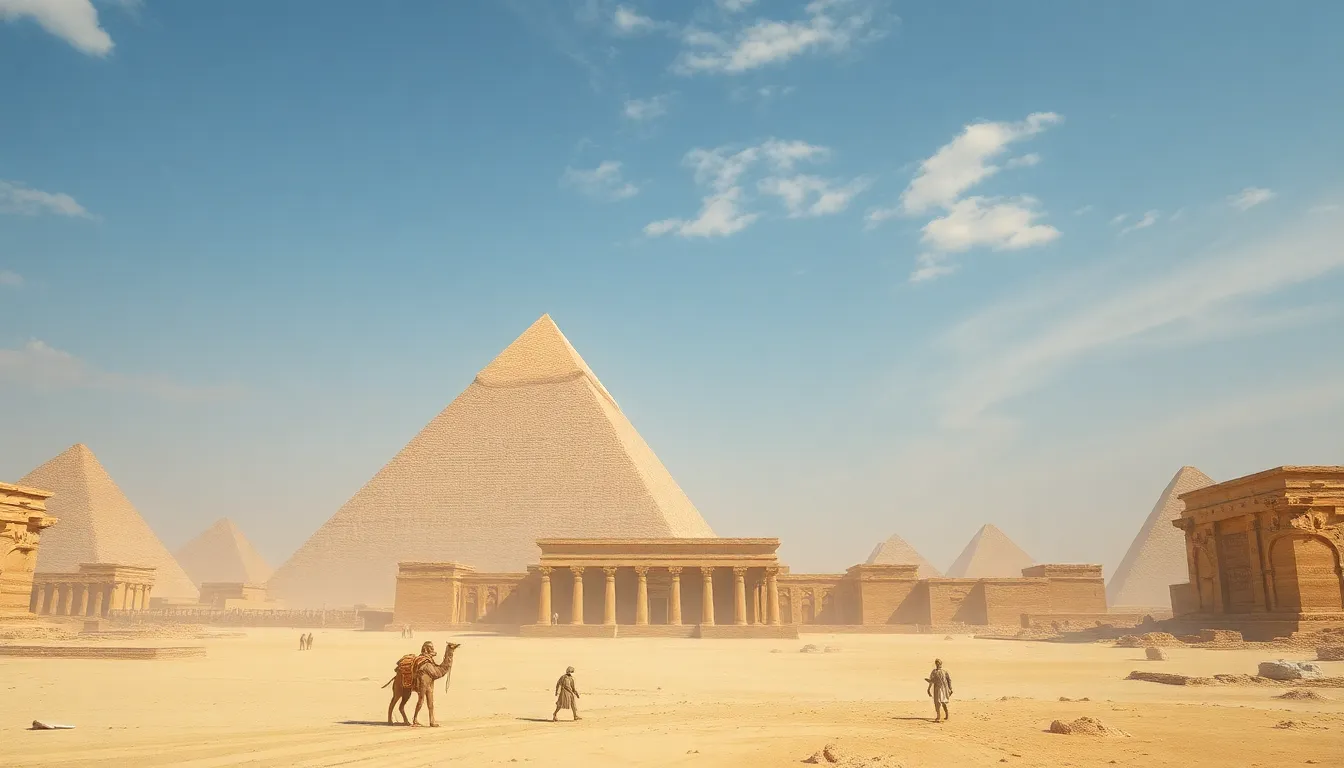The Myths of Pharaoh Tuthmosis I and the Expansion of Egypt
I. Introduction
Pharaoh Tuthmosis I, a prominent figure in ancient Egyptian history, is often recognized for his significant contributions to the expansion and consolidation of the Egyptian Empire during the 18th Dynasty. His reign, which lasted from approximately 1506 to 1493 BCE, marked a pivotal period of military conquests and cultural advancements. This article aims to explore the myths surrounding Tuthmosis I, highlighting his role in the expansion of Egypt and the ways in which these myths have shaped our understanding of his reign.
II. Historical Context of Tuthmosis I
The 18th Dynasty of Egypt is often regarded as a high point in ancient Egyptian civilization, characterized by political stability, military expansion, and cultural flourishing. This period laid the foundation for the New Kingdom, during which Egypt became a dominant power in the ancient world.
Tuthmosis I ascended to power under circumstances that remain somewhat obscure, but it is believed that he was the son of a military commander. His reign is noted for the establishment of a strong centralized government and the expansion of Egyptian territories through military campaigns.
III. The Myth of Divine Descent
One of the most compelling aspects of Tuthmosis I’s rule is his claim of divine lineage. According to myth, he asserted that he was the son of the god Amun, which provided him with a divine right to rule. This belief in divine descent played a crucial role in legitimizing his position as pharaoh.
- Divine Parentage: Tuthmosis I was often depicted in temple reliefs and inscriptions as a favored child of the gods, reinforcing his authority.
- Mythological Justification: The association with Amun allowed him to tap into the religious sentiments of the Egyptian people, as they believed their rulers were chosen by the gods.
IV. Military Campaigns and Conquests
Tuthmosis I is celebrated for his military prowess and his numerous campaigns that expanded Egypt’s borders into Nubia and the Levant. His military strategies and success on the battlefield have given rise to various myths emphasizing his strength and tactical genius.
Notable military campaigns include:
- Conquest of Nubia, which secured vital resources for Egypt.
- Military expeditions into the Levant, extending Egyptian influence into modern-day Syria and Palestine.
Myths surrounding his military achievements often depict him as a warrior pharaoh who could summon the power of the gods in battle, ensuring victory against overwhelming odds. These tales not only glorified his conquests but also inspired future generations of military leaders in Egypt.
V. Architectural Contributions and Their Myths
The architectural legacy of Tuthmosis I is significant, with several key monuments and temples constructed during his reign. His contributions to architecture are enveloped in myths that reflect the religious and cultural values of ancient Egypt.
- The Temple of Amun at Karnak, which was expanded under his rule, symbolizes divine favor and the strength of the pharaoh.
- The construction of his mortuary temple in the Valley of the Kings, which was intricately designed to ensure his safe passage into the afterlife.
Myths surrounding these structures often emphasized their divine protection and the pharaoh’s connection to the gods, serving as a physical manifestation of his divine right to rule.
VI. Religious Innovations and Cultural Impact
Tuthmosis I played a pivotal role in the evolution of Egyptian religion and culture. His reign saw the integration of new religious practices that further solidified the connection between the pharaoh and the divine.
Some notable religious innovations include:
- The promotion of Amun as the chief deity, which elevated the god’s status across Egypt.
- Establishment of new rituals and festivals that celebrated the pharaoh’s divine role.
Myths surrounding Tuthmosis I often portray him as a religious innovator who brought divine wisdom to his people, further associating his reign with prosperity and spiritual enlightenment.
VII. The Legacy of Tuthmosis I
The legacy of Tuthmosis I is profound, influencing not only his immediate successors but also the broader trajectory of Egyptian history. His military conquests set the stage for a period of unprecedented expansion and wealth.
Myths and historical narratives surrounding his legacy depict him as the archetypal warrior pharaoh, embodying the ideals of strength, wisdom, and divine favor. His successors, particularly Hatshepsut and Tuthmosis III, would build upon his foundation, expanding the empire even further.
VIII. Conclusion
The interplay between myth and reality in Tuthmosis I’s reign illustrates the complexities of understanding historical figures in ancient Egypt. While his military achievements and architectural contributions are well-documented, the myths surrounding his divine descent and military prowess enrich our understanding of his significance.
Ultimately, exploring Tuthmosis I through both mythological and factual lenses allows us to appreciate the cultural and historical context of his reign, providing insight into the enduring legacy of one of Egypt’s most formidable pharaohs.




